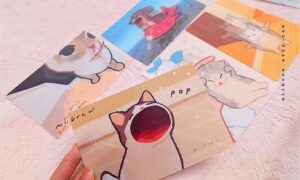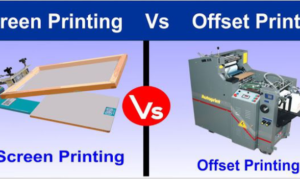DTG (direct-to-garment) printing services have become a game-changer in the fast-paced world of custom clothes, where individuality and customization are highly valued. This cutting-edge technology offers a level of customization that traditional printing techniques find difficult to match, enabling colorful, detailed patterns on a variety of fabric kinds.
How DTG Printing Works
Using a specialized printer, DTG printing services applies water-based inks directly onto the fabric. This process highlights details that other printing methods would overlook, making it very useful for complex designs and detailed photos. Due to its speedy procedure, it is the best option for on-demand customized and small-batch printing. NW Custom Apparel provides you best services and have best technology to make your desired product.
Advantages of DTG Printing
One of the primary advantages of DTG printing is its ability to produce high-quality prints with sharp details and vibrant colors. The water-based inks penetrate the fabric fibers, resulting in a soft and comfortable feel, unlike some traditional printing methods that leave a heavy, noticeable layer on the fabric. Traditional printing methods often require expensive setup fees, making them less practical for small quantities. DTG printing eliminates the need for costly setups, allowing for cost-effective production even for limited runs. This affordability makes it a preferred choice for small businesses, independent artists, and event organizers.
Applications of DTG Printing
Due to its capacity to meet the expanding need for customized garments, DTG printing has gained popularity in the fashion and apparel sectors. DTG printing provides people with distinctive fashion statements by promoting creativity in anything from personalized t-shirts to elaborate graphics on hoodies. DTG printing offers a wide variety of customizing possibilities. The options are almost infinite, ranging from picking the fabric’s color to printing intricate multicolored patterns. This level of customization serves both consumers seeking for distinctive clothing and companies seeking to produce distinctively branded products. With DTG printing, intricate patterns, gradients, and even images may be accurately replicated, allowing artists to fully express their ideas.
DTG Printing vs. Traditional Printing Methods
While DTG printing offers numerous advantages, it’s essential to weigh them against the benefits and drawbacks of traditional printing methods. Screen printing, for instance, may excel in certain scenarios, such as high-volume production of simple designs. DTG printing, on the other hand, shines when it comes to intricate designs and smaller quantities. The evolution of printing technology is evident in the shift from traditional methods to more advanced techniques like DTG printing. As consumer demands for customization and high-quality prints grow, the printing industry adapts to meet these needs. DTG printing represents a forward-thinking approach that aligns with the changing landscape of the market. While NW Custom apparel have best technology to make vibrant and beautiful prints onto the fabrics.
Popular Fabrics for DTG Printing
Choosing the right fabric is crucial for achieving optimal DTG printing results. While this technology is versatile enough to work with various fabrics, some materials yield better outcomes. Cotton, for example, absorbs the water-based inks exceptionally well, resulting in vibrant and durable prints. Polyester blends and other natural fibers are also compatible with DTG printing, providing options for different preferences. Considerations for fabric types extend beyond print quality. Factors like comfort, breathability, and the intended use of the garment play a role in selecting the most suitable fabric for a particular project.
Environmental Impact of DTG Printing
As environmental consciousness grows, businesses and consumers alike are considering the ecological impact of their choices. DTG printing stands out as a more environmentally friendly option compared to some traditional printing methods. Water-based inks are non-toxic and produce minimal waste, contributing to a reduced ecological footprint.
Comparison with Other Printing Methods in Terms of Sustainability
Contrasting the environmental impact of DTG printing with other methods reveals a more sustainable choice. Traditional printing methods, such as screen printing, often involve harsh chemicals and generate more waste. The eco-friendly nature of DTG printing positions it as a responsible choice for those seeking a greener alternative in the world of custom printing.
Future Trends in DTG Printing
The future of DTG printing holds exciting possibilities with emerging technologies and innovations. Advancements in ink formulations, printer capabilities, and software integration are on the horizon. These developments aim to further enhance print quality, speed up production, and expand the range of printable materials. As the demand for customized products continues to rise, the DTG printing industry is expected to witness significant growth. New players may enter the market, offering innovative solutions, and existing providers may expand their services. The accessibility and affordability of DTG printing are likely to attract a diverse range of users, from individual creators to established businesses.
Challenges and Solutions in DTG Printing
While DTG printing offers numerous advantages, it’s not without its challenges. Issues like color matching, pretreatment, and print durability can arise. However, proactive measures can address these challenges effectively. Collaborating with experienced service providers, proper file preparation, and understanding the intricacies of the printing process contribute to overcoming potential hurdles. DTG printing service providers often have strategies in place to address common challenges. Pre-treatment processes, color calibration, and ongoing maintenance of printing equipment play crucial roles in ensuring consistent and high-quality results. Open communication between service providers and clients is also essential for resolving any issues that may arise during the printing process.
Tips for Designing for DTG Printing
Creating designs specifically for DTG printing requires attention to detail. Vector graphics, high-resolution images, and color separation are key considerations. Understanding the capabilities of the DTG printer, including its color gamut and resolution, allows designers to create artwork that translates well onto fabric. Designing for DTG printing becomes more accessible with the availability of specialized tools and resources. Online design platforms, software tutorials, and guidelines from DTG printing service providers empower creators to produce designs that maximize the potential of this printing method.
Conclusion
In the ever-evolving landscape of custom printing, DTG printing services stand out as a versatile and impactful choice. From its ability to produce high-quality, detailed prints to its eco-friendly aspects, DTG printing meets the diverse needs of individuals and businesses alike. As technology continues to advance, the future holds even more exciting possibilities for this innovative printing method. Whether you’re a small business owner looking to create branded merchandise or an individual seeking personalized apparel, exploring the world of DTG printing opens up a realm of possibilities. Embrace the freedom to express your creativity and make a statement with custom prints that leave a lasting impression.



































